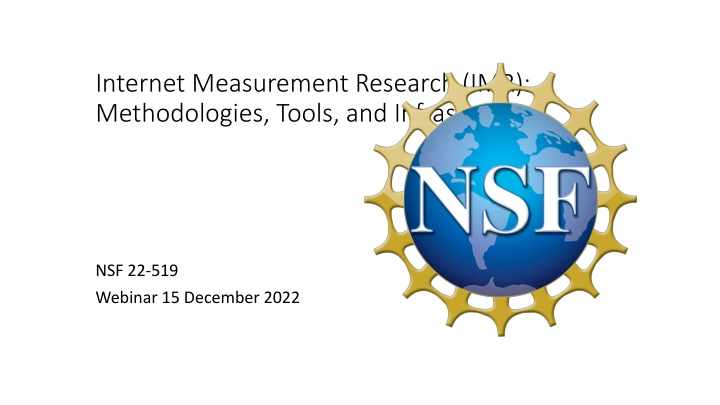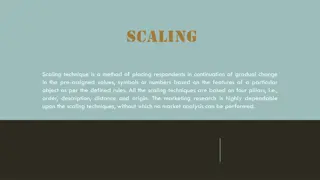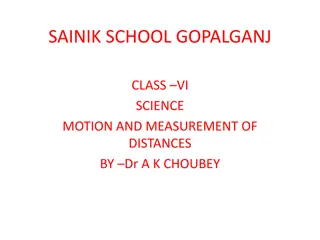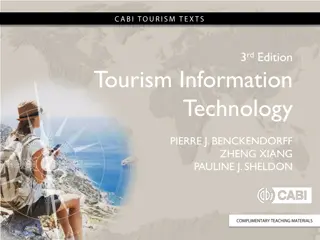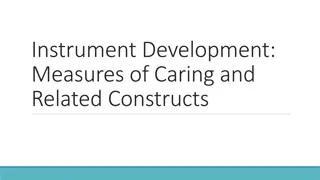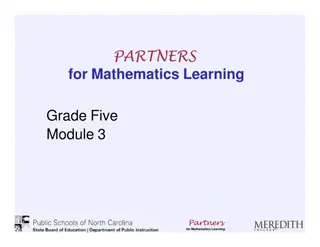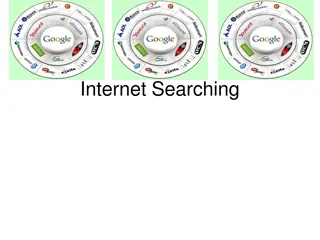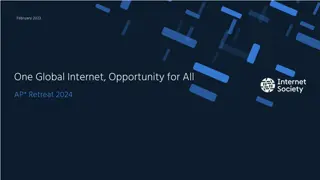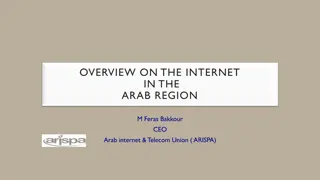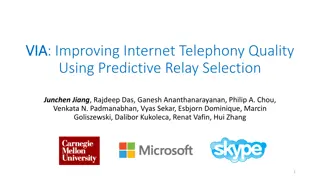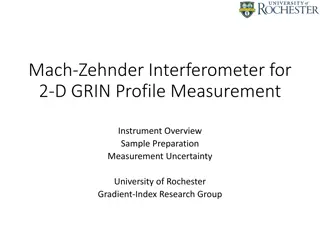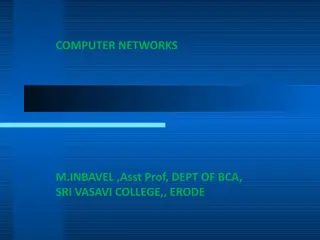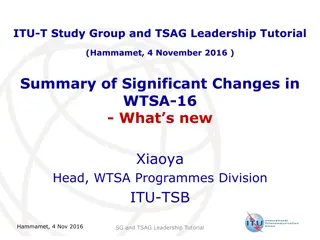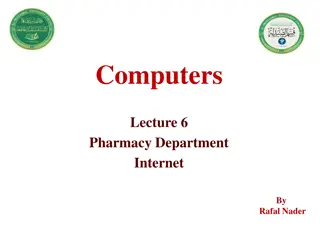Advancing Internet Measurement Research: IMR Program Overview
The Internet Measurement Research (IMR) program aims to enhance Internet measurement methodologies, tools, and infrastructure for a comprehensive understanding of wired and wireless networks. It promotes the development of new data collection methods, measurement tools, and related infrastructure. The program seeks to address the current challenges in assessing Internet performance and longitudinal behavior. IMR encourages collaborative research to shape the future of Internet measurement practices.
Download Presentation

Please find below an Image/Link to download the presentation.
The content on the website is provided AS IS for your information and personal use only. It may not be sold, licensed, or shared on other websites without obtaining consent from the author.If you encounter any issues during the download, it is possible that the publisher has removed the file from their server.
You are allowed to download the files provided on this website for personal or commercial use, subject to the condition that they are used lawfully. All files are the property of their respective owners.
The content on the website is provided AS IS for your information and personal use only. It may not be sold, licensed, or shared on other websites without obtaining consent from the author.
E N D
Presentation Transcript
Internet Measurement Research (IMR): Methodologies, Tools, and Infrastructure NSF 22-519 Webinar 15 December 2022 1
Program Directors Computer and Network Systems (CNS) Deep Medhi Ann Von Lehmen Darleen Fisher Murat Torlak Daniela Oliveira James Joshi Nicholas Goldsmith Computing and Communication Foundations (CCF) Peter Brass Office of Advanced Cyberinfrastructure (OAC) Robert Beverly Kevin Thompson Division of Mathematical Sciences (DMS) Edsel Pena Yong Zeng 2
Synopsis New, focused program to support Internet measurement Currently, Internet measurement work is done in an ad hoc and piecemeal manner There is work on wired core networks, but going forward, a comprehensive approach both for wired and wireless Internet together would give us a better understanding While providers provide some data on performance, they are coarse grain and provider specific Independent ways to assess Internet performance are very important Currently, little ability to understand longitudinal behavior The goal of the IMR program is to encourage, coordinate, and connect research in Internet measurement in a comprehensive manner Tracks Track 1: Methodologies and Methods: support the creation of new methods for collecting, anonymizing, modeling, and analyzing Internet measurement data. Track 2: Measurement Tool Development and Demonstration: support the creation and deployment of new tools to collect Internet measurement data Track 3: Internet Measurement Related Infrastructure-Planning: support the creation of infrastructure for hosting measurement tools and data (not available in FY23) 4
Track 1: Methodologies and Methods Track 3: Internet Measurement Related Infrastructure-Planning Track 2: Measurement Tool Development and Demonstration 5
Partners Directorate for Computer and Information Science and Engineering (CISE) Computer and Network Systems (CNS) Computing and Communication Foundations (CCF) Office of Advanced Cyberinfrastructure (OAC) Secure and Trustworthy Cyberspace Program (SaTC) Directorate for Mathematical and Physical Sciences (MPS) Division of Mathematical Sciences (DMS) 6
Track 1: Methodologies & Methods Support the creation of new methods for collecting, anonymizing, modeling, and analyzing Internet measurement data Subtracks: 1A: Statistical Methodologies: supports the creation of new stochastic models and statistical methodologies for Internet measurement research 1B: Privacy-Preserving Methodologies: supports innovative techniques or methodologies to ensure privacy protection during collection, sharing and analysis of Internet measurement data 1C: Other Methodologies: Supports the creation of new Internet measurement methodologies, analyses, or post-processing not covered by the first two subtracks Total Budget: up to $600,000 up to 4 years 8
1A: Statistical Methodologies This subtrack is intended to develop new stochastic models and statistical methodologies for Internet measurement data from fixed, wireless, or core Internet. Such models and methodologies may include, but are not restricted to: Statistical methodologies (including experiment design) to de-bias skewed Internet measurements (such as might be due to sparsity of collected data, lack of geographic representation, crowd sourced data); Statistical sampling methods to obtain holistic measurements of the Internet in different dimensions for a better sense of the health of the Internet at various levels; Models that allow for the normalization of collected data or extrapolation from collected data; Internet data modeling at different frequencies including high-dimension high-frequency and mixed frequency data analysis; Longitudinal studies of Internet measurements; Statistical analysis, such as change-point and regression analysis of Internet multi-streaming data; and Assessment of the validity of crowd-sourced datasets. Strongly encourage to have both measurement and statistics researchers 9
1B: Privacy-Preserving Methodologies This subtrack is intended to improve Internet measurement data collection and dissemination by addressing privacy concerns in the data lifecycle. Proposals in this subtrack may include, though are not limited to: Collection methodologies that de-identify data at the outset; Creation of methods to de-identify existing data; Creation of anonymization methods which do not compromise data quality and utility; Creation of methods to access and/or share collected data in a privacy-preserving manner; and Privacy preserving analysis of Internet data. Strongly encourage to have both measurement and security researchers 10
1C: Other Methodologies This subtrack is intended to support the creation of new Internet measurement methodologies, analyses, or post-processing, not covered by the first two subtracks. Proposals to this subtrack may include, but are not limited to: Reduction of the footprint or improving the efficiency of current data collection methods; Integration of the measurement of core and access networks with the ability to characterize performance by segment; AI or ML-based methodologies for Internet measurement; Measurement methods for the IPv6 address space; and Examination of the extent to which cross layer specifications or measurements can be rendered useful (e.g., propagation maps, signal-related measurements), and assessment of whether these are applicable to mobile Internet performance. 11
Track 2: Tool Development & Demonstration Development of deployable Internet measurement data collection tools that others can use (e.g., the research community and citizen scientists) May collect data at different levels, including but not limited to: core Internet, mobile Internet (that can be downloaded to a mobile phone), hand-held devices, laptops/desktops, or tools that could be deployed by ISPs Proposals should seek to demonstrate the application of the tool in a particular environment, and to make the tool publicly available, while at least one version of the tool is expected to be made available through an open-source license Should consider privacy and security aspects, including unintended harms of the proposed data collection mechanism Total Budget: up to $600,000 for 2 years Integration supplement of up to $100,000 may be requested at least 18 months into project based on notable progress 12
Estimated Number and Size of Awards Track 1 (Methodologies and Methods) Approximately 11 Awards 3 to 4 years $600,000 Track 2 (Measurement Tool Development and Demonstration) Approximately 11 Awards 2 years $600,000 $100,000 integration supplement may be requested after 18 months Track 3 (Internet Measurement-Related Infrastructure Planning) Approximately 4 Awards 1 year $100,000 Total Funding Amount: $14,000,000 over 2 years 14
Upcoming Deadlines Track 1 (Methodologies and Methods) February 15, 2023 Track 2 (Measurement Tool Development and Demonstration) March 8, 2023 No Track 3 in FY23 15
Intellectual Merit The Intellectual Merit criterion encompasses the potential to advance knowledge What is the potential for the proposed activity to advance knowledge and understanding within its own field or across different fields? To what extent do the proposed activities suggest and explore creative, original, or potentially transformative concepts? Is the plan for carrying out the proposed activities well-reasoned, well-organized, and based on a sound rationale? Does the plan incorporate a mechanism to assess success? How well qualified is the individual, team, or organization to conduct the proposed activities? Are there adequate resources available to the PI (either at the home organization or through collaborations) to carry out the proposed activities? 17
Broader Impacts The Broader Impacts criterion encompasses the potential to benefit society and contribute to the achievement of specific, desired societal outcomes What is the potential for the proposed activity to benefit society or advance desired societal outcomes? To what extent do the proposed activities suggest and explore creative, original, or potentially transformative concepts? Is the plan for carrying out the proposed activities well-reasoned, well-organized, and based on a sound rationale? Does the plan incorporate a mechanism to assess success? How well qualified is the individual, team, or organization to conduct the proposed activities? Are there adequate resources available to the PI (either at the home organization or through collaborations) to carry out the proposed activities? 18
Solicitation Specific Review Criteria Track 1 How does the proposed methodology fill a current gap? (1A, 1B, 1C) Significance in Internet Measurement: Does the project address a significant problem in the area of Internet measurement? Is the prior research supporting the proposed project rigorous? (1A, 1B, 1C) Statistical Innovation: Are the proposed statistical methods innovative? Does the project apply existing statistical methodologies to a new situation? If yes, how challenging are such applications? (1A) Integration: How well do the proposed statistical methods integrate with the intended Internet measurement problems? How well does the project develop new statistical methodologies that can apply to Internet Measurement? (1A) Privacy-preserving innovation: How well do the proposed privacy protection methods integrate with the intended Internet measurement privacy problems? How well does the project develop new privacy protection methodologies that can apply to Internet Measurement? (1B) Integration and Utility: How well will the proposed methods integrate with the intended Internet measurement problems? To what extent do the approaches proposed preserve data utility? (1A, 1B, 1C) Are security and privacy aspects being considered in the design, implementation and evaluation of the proposed methods, methodologies, approaches, and tools? (1A, 1C) 19
Solicitation Specific Review Criteria Track 2 How broadly applicable is the tool expected to be? Will the tool provide a new method for collecting Internet Measurement data? If the tool is developed for end-users, how will the tool provide privacy for data collection? Will the tool be made publicly deployable and include plans for an open-source license? If so, how? Are security and privacy aspects being considered in the design, implementation and evaluation of the proposed methods, methodologies, approaches, and tools? 20
Supplementary Documents A list of Project Personnel and Partner Institutions A List of Letters of Collaboration Letters of Collaboration Documentation of collaborative arrangements of significance to the proposal Collaboration Plans If a project with more than one PI does not include a Collaboration Plan of up to 2 pages, that proposal will be returned without review Data Management Plan (required) 23
Collaboration Collaborative proposals with separate submissions from multiple organizations are only allowed for Track 1 (MM) proposals For Track 1, non-lead collaborating organizations may be submitted as collaborative proposals or as subawardees For Track 2 (MT): support for non-lead collaborating organizations should be requested as subawards by the lead organization submitting the proposal. For these tracks, separately submitted collaborative proposals are not allowed. 24
Questions Questions 25
